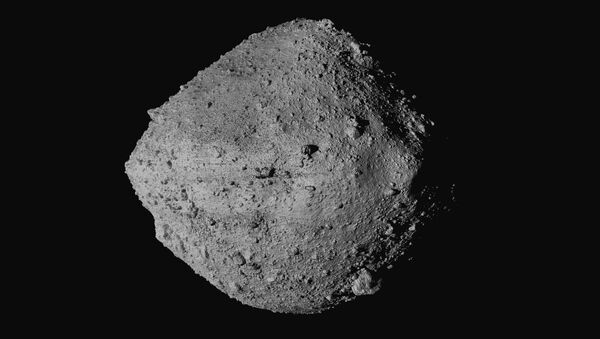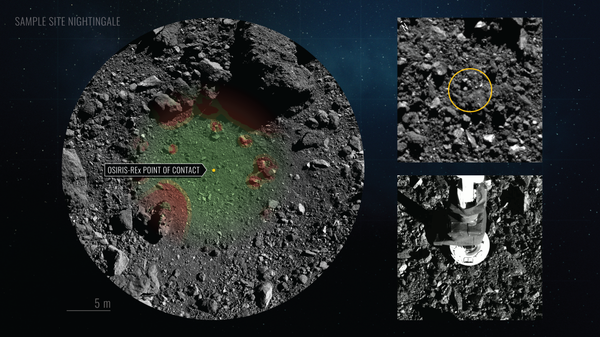NASA announced in an October 21 news release that OSIRIS-REx’s Touch-And-Go (TAG) sample collection event on Bennu - some 200 million miles away - returned 82 SamCam images over a five-minute period after touching down at sample site Nightingale.
The 82 images from the October 20 mission were later compiled and published in a video. According to the release, the first image was taken at roughly 82 feet (25 meters) above Bennu’s surface, and the last included image was captured at approximately 43 feet (13 meters) in altitude.
“The team on Earth received confirmation at 6:08 p.m. EDT that successful touchdown occurred,” the release read.
A study published in Science Advances days prior to the TAG mission evaluated the strength of Bennu’s gravity field, as well as the gravity field measurement of the ejected particles that would temporarily orbit Bennu “before reimpacting the surface or escaping from the asteroid.”
The research findings - based on two years of OSIRIS-REx data - suggested “density heterogeneity” was present throughout Bennu, with some of the least dense spots being near the asteroid’s core.
“If its core has a low density, it’s going to be easier to pull the entire asteroid apart,” detailed study lead Daniel Scheeres, a professor in University of Colorado Boulder’s Department of Aerospace Engineering Science.
Researchers believe this is due to the asteroid’s spin continuously pushing once-compacted material to Bennu’s surface.
"It's as if there is a void at its center, within which you could fit a couple of football fields,” Scheeres explained.
“If you can measure the gravity field with enough precision, that places hard constraints on where the mass is located, even if you can’t see it directly,” co-author Andrew French noted.
Scheeres claimed all of Bennu could end up “flying apart” in “maybe a million years or less.”
However, that is simply his current estimate on Bennu’s fate.
“None of them have sat out there unchanging since the dawn of the solar system,” Scheeres said of asteroids. “They’re being changed by things like sunlight affecting how they spin and collisions with other asteroids.”



